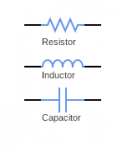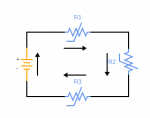Tag Archives: Inrush Current
Circuit Protection with Ametherm’s Mini-Amp
In electronics and electrical engineering, most consumers overlook inrush current. When you power on electronic devices, they can experience a sudden surge in current, often several times higher than their usual levels. This surge can cause various issues, such as reducing equipment lifespan and damaging circuits. In this blog post, we’ll explore Ametherm’s Mini-Amp Inrush Current Limiters as an effective solution for circuit protection. Understanding Inrush Current Before we discuss … Continue Reading
Energy Efficiency Brings Savings with Inrush Current Limiters

In today’s world of technology, there’s a big focus on making electronic devices and systems that have energy efficiency. This goes beyond just talking about it – it’s a crucial part of how we design and make things now. Whether it’s the phone in your pocket, the computer you use, big machines in factories, or systems that create renewable energy, being energy-efficient is a big deal. And a key player … Continue Reading
Ametherm’s Guide To Kinked Leads

Ametherm is a trusted name in the field of inrush current limiting thermistors, providing solutions for a wide range of applications. To help you choose the right inrush thermistor for your specific needs, Ametherm offers three different lead types. These leads are crucial for proper installation and can significantly impact the effectiveness of the thermistor in your circuit. No Kink, Straight Leads: No Dash When you come across an Ametherm … Continue Reading
Inrush Current Limiting: PTC, NTC, or Active Circuits

Inrush current limiting is vital to safeguard equipment and enhance its lifespan. NTC and PTC thermistors for inrush current reduction offer benefits like simplicity and cost-effectiveness, but sometimes, an active circuit is a more suitable choice. Comparing NTC, PTC Thermistors, and Active Circuits for Inrush Current Limiting Thermistors are temperature-sensitive resistors that precisely change resistance in proportion to temperature changes. NTC thermistors lower resistance as temperature rises, providing additional series … Continue Reading
Why NTC Thermistors In Series Beats Parallel

Connecting in Series – Recommended When you connect NTC thermistors in series for inrush current control, you gain several important benefits. Most importantly, the energy is distributed across all the units evenly, which extends the life of both your application and it’s components. Need a Refresher on What a Thermistor is? Click Here. Furthermore, another benefit of connecting NTC Thermistors In Series is that in doing so, it raises their … Continue Reading
Inverter Pre-Charge Circuit Inrush Current

Pre-Charge Circuits Prevent Damage to Inverters Severe damage can occur to inverters when the inrush current is too great for the inverter. Pre-charge circuits protect the inverters by controlling the initial power surge. PTC thermistors can help a pre-charge circuit protect the inverter. Inrush current occurs when the maximum instantaneous input current flows through a system when the electrical power is switched on. In power tools, such as power drives, … Continue Reading




